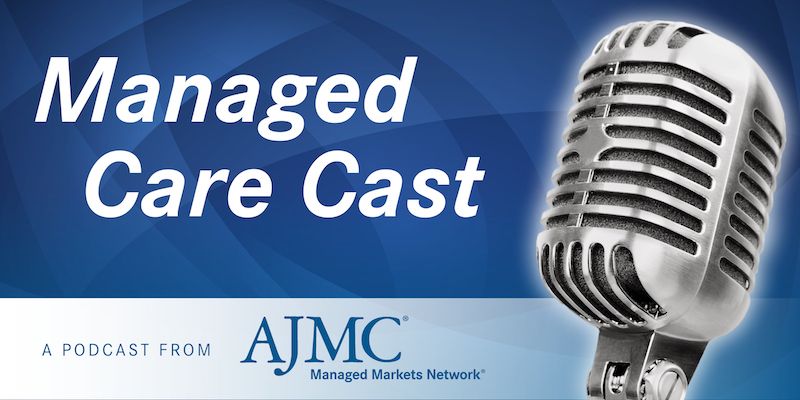Video
Triple Therapy in COPD: IMPACT and FULFIL
Stakeholders in healthcare consider the implications for treating chronic obstructive pulmonary disease with triple therapy based on data demonstrated in the IMPACT and FULFIL trials.
Transcript
Neil B. Minkoff, MD: One of the things we need to touch on as we have this conversation is that there were a couple of reasonably large studies on treatment of COPD [chronic obstructive pulmonary disease] recently: the IMPACT trial and the FULFIL trial. I was hoping we could walk through those. I’m going to ask you to start with the IMPACT trial and discuss a combination of the patient population, the efficacy, and then, more important, exacerbations and quality of life.
Byron Thomashow, MD: The IMPACT trial is an interesting trial in part because it’s a very large trial. We’re talking about 10,000 people. That’s not very large in our cardiology study, but it’s a very large study for COPD. There are relatively few studies with that number of people. I think that’s important to start with.
What the IMPACT trial did was it looked at basically 3 groups: People who were on a LAMA [long-acting muscarinic antagonist] or LABA [long-acting beta-agonist], people who were on a LABA or ICS [inhaled corticosteroid], and people who are on triple therapy. In this trial, at least, the triple therapy was clearly better than either of the 2 others, from the standpoint of both exacerbations and symptoms. There was even a suggestion of a mortality benefit. So the results were very powerful.
In this particular trial, it looked like the results from LABA/ICS were a little better than those of LAMA/LABA, which is different from what we’ve seen in other trials. When you see that difference, you need to look at who is being studied, how it’s being studied, and what the washout period was like beforehand. It’s complicated to look at it. It doesn’t necessarily mean that 1 study was good and 1 study was bad. But I think the major take-home point from the IMPACT trial is that there is certainly a subset of patients with COPD who would clearly benefit from triple therapy.
Neil B. Minkoff, MD: Were there any concerns about safety that were raised?
Byron Thomashow, MD: There is always the issue of pneumonia with the addition of the inhaled corticosteroid. It was not a major issue in the IMPACT study. It’s important to recognize that in every study where that has been shown—that there’s a pneumonia signal—pneumonia doesn’t seem to have impacted the quantity of life. They don’t seem to be carrying a mortality risk. But that doesn’t mean they’re not an issue, and it doesn’t mean they couldn’t. As we’ve discussed before, every time you add a medicine or a combination of medicines, you to need to view it and weigh the benefits and risks of that. But there are certainly data suggesting that in a subset of the COPD population, the triple therapy is beneficial.
Neil B. Minkoff, MD: And they looked at both exacerbations and quality of life as well?
Byron Thomashow, MD: Yes.
Neil B. Minkoff, MD: And so if we could, let’s move on to the FULFIL trial.
Frank C. Sciurba, MD, FCCP: The FULFIL trial is a little bit of an older trial. What it did was look at the triple therapy, a once-a-day, 1-puff-a-day triple therapy versus a commonly used double LABA/ICS, of which none of us feels that ought to be a primary therapy. In part, it’s influenced by these trials. So it’s comparing LABA/ICS twice a day with LABA/LAMA/ICS once a day.
The way this trial was designed, I recall about 1800 individuals were randomly assigned after measuring them on whatever their usual therapy was. Whatever they came in on—whether they were inappropriately just on short-acting, whether they were on a single anticholinergic, whether they were on a LABA/ICS, or whether they may have been on a triple—didn’t matter. They were then randomized to either the triple or the LABA/ICS twice a day. And the primary outcomes in this trial were quality of life—the St. George’s Respiratory Questionnaire—and FEV1 [forced expiratory volume in 1 second].
The triple outperformed the double in all categories. A secondary outcome measure that wasn’t even the primary, at 6 months, was exacerbation rate, and results also showed a better reduction in exacerbation rates with the triple compared with the LABA/ICS. Both of these studies highlight that LABA/ICS is not the appropriate therapy for patients with this disease.
Neil B. Minkoff, MD: Same follow-up question: Any concerns about safety raised by this trial?
Frank C. Sciurba, MD, FCCP: In this trial, all patients were on a bronchodilator and received inhaled corticosteroids. The only difference was 1 group had the LAMA. No, there were no safety issues comparing those 2 groups.
Neil B. Minkoff, MD: Great, thanks.
Newsletter
Stay ahead of policy, cost, and value—subscribe to AJMC for expert insights at the intersection of clinical care and health economics.





